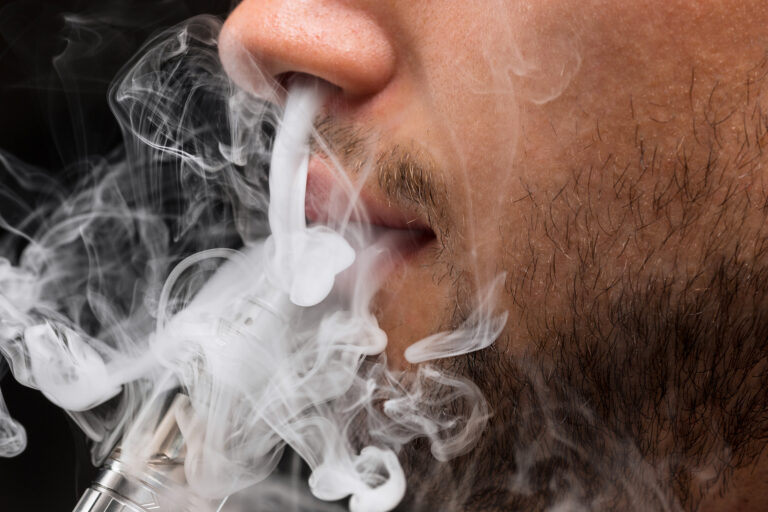Smoking a lot?
Smoking has long been a controversial yet deeply ingrained habit in societies worldwide. People smoke for various reasons—stress relief, social influence, or simply out of curiosity. While some become addicted to nicotine, others are drawn to the ritual itself.
I know this firsthand. I started smoking when I was 13 years old, not because I needed to, but out of sheer curiosity. It was the 90s, and smoking felt like something new and rebellious—something “cool” that many teenagers experimented with. I never really got hooked on nicotine, but something about the act of smoking fascinated me.
Later, I discovered clove cigarettes, which had a unique, rich flavor. That’s when I realized it wasn’t the nicotine that attracted me—it was the taste. The experience was about flavor more than addiction. That realization probably saved me from becoming a heavy smoker.
Years later, I married someone who absolutely hated smoking, and my non-daily habit eventually disappeared. I moved on. Or so I thought.
Fast forward 20 years, and I found myself in the middle of a divorce—one of the most stressful periods of my life. The urge to smoke came back. Not because I was addicted, but because I missed the ritual of it—the sensation of inhaling, the moment of pause that smoking provides.
And that’s when I made a connection: This is exactly why so many people vape today.

The Hidden Danger of Vaping
When I was a teenager, I searched for flavor, and I found it in clove cigarettes. Today, people have an endless variety of flavors at their disposal, thanks to vapes.
I never tried vaping myself, but I now understand why so many people are drawn to it—they’re chasing the flavors, just like I once did. Unlike traditional cigarettes, vapes offer an illusion of safety by removing the harsh taste of tobacco, replacing it with sweet, fruity, or minty flavors.
But here’s the danger:
🚨 Vaping isn’t just about flavor—it’s just as addictive as smoking, and in many cases, even worse.
Many vapes contain higher concentrations of nicotine than traditional cigarettes. Some users end up consuming more nicotine through vaping than they would have ever inhaled from regular smoking. The worst part? Most people don’t even realize they are becoming addicted (cdc.gov).
What starts as a pursuit of flavor turns into a chemical dependency—and that’s the real trap.
Why Do People Smoke?
Understanding why people start smoking (or vaping) can help us find better ways to quit. Some of the most common reasons include:
1. Stress Relief & Emotional Escape
Nicotine temporarily boosts dopamine levels in the brain, creating a short-lived feeling of relaxation. Many smokers use cigarettes (or vapes) to cope with stress, anxiety, or emotional distress (mentalhealth.org.uk).
2. Social & Environmental Influence
For many, smoking starts as a social activity—something they do with friends or colleagues. It becomes associated with specific routines like having a drink, taking a break at work, or even just stepping outside for fresh air.
3. Psychological Dependence
Beyond nicotine addiction, smoking can be a deeply ingrained habit. The act of lighting up, taking a drag, and feeling the inhale-exhale cycle can be emotionally satisfying, making it hard to quit even when the physical cravings are gone.
The Challenges of Quitting Smoking (or Vaping)
Quitting smoking or vaping is difficult for two main reasons:
- Physical Dependence on Nicotine – Withdrawal symptoms like irritability, anxiety, and cravings make it hard to stop (cancer.org).
- Psychological Dependence on Rituals – Even without nicotine addiction, the habit itself can be hard to break.
A study by Pew Research Center found that smokers experience higher stress levels than non-smokers, debunking the myth that smoking is an effective stress reliever (pewresearch.org).
Effective Strategies to Quit Smoking (or Vaping)
1. Counseling & Support Groups
Quitting is easier with professional support. Many organizations offer free counseling, quitlines, and group therapy to help smokers develop strategies to quit (cdc.gov).
2. Nicotine Replacement Therapy (NRT)
Products like nicotine patches, gum, and lozenges help reduce withdrawal symptoms by gradually lowering nicotine intake (who.int).
3. Prescription Medications
Medications such as varenicline (Chantix) and bupropion (Zyban) help reduce nicotine cravings and withdrawal symptoms. These should be prescribed by a healthcare professional (who.int).
4. Behavior Modification Therapy
Cognitive-behavioral therapy (CBT) helps change how the brain associates smoking (or vaping) with stress or pleasure, making it easier to quit.
5. Exercise & Mindfulness
Physical activity and meditation-based techniques can help manage stress and reduce cigarette cravings (cancer.org).
Resources to Help You Quit
United States
- American Heart Association – Quit Smoking Guide
- CDC – How to Quit Smoking
Canada
- Health Canada – Smoking Cessation Programs
Europe
- World Health Organization (WHO) – Tobacco Cessation Guidelines
Conclusion
For many, smoking starts as an experiment but evolves into a habit that is hard to break. Some people, like me, never develop a nicotine addiction but still crave the ritual—which is why vaping has become so dangerous.
But quitting is possible, whether you smoke out of habit, stress, or nicotine dependence. With the right tools, support, and mindset, a smoke-free life is within reach.
💬 Have you ever struggled to quit smoking or vaping? What worked for you? Share your experience in the comments!

